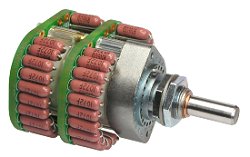Simplifying multiple user interfaces for a pre-amplifier: LULO
Now it is clear that the 8th note attenuator (as a passive pre-amplifier) will use a single linear potentiometer for control. In the last post I already listed the benefits of potentiometers over rotary encoders or simple tactile buttons in this application.
For a reminder, a potentiometer gives us a specific value if we turn it to a specific position. This is why we like it and this is what we call a natural behaviour.
The attenuator has an option for IR remote controlling. In fact, for control you get a potentiometer reading, and an IR receiver. You can omit any of those literally.
Option 1: use only remote control
You may ask why would anybody do that but I know of at least one headphone amplifier that has this only user interface, the Trilogy Audio 933.
Option 2: use only the potentiometer
For my own headphone amplifier I will follow this route. With headphones on my head I would not run to anywhere. Next to my chair or sofa the amplifier is always within reach, and I like to turn that big shiny knob.
Option 3: use both the potentiometer and the remote
For my DIY power amplifier I will use both. It is not like a headphone amplifier and it need to be controllable from moderate distances.
There are some things I think worth to mention in connection with option 3.
Usually a remote controlled amplifier has either digital controls (buttons, rotary encoder, etc.) or a motorized potentiometer.
In a traditional amplifier a motorized potentiometer follows the remote control, so basically you only control the motor with the remote. The potentiometer shows you the actual volume setting. Not using a motorized potentiometer somehow the volume need to be tracked when using the remote.
But what if the potentiometer is not motorized and the amplifier neither has rotary encoder or display. Because the 8th note attenuator does not have those. Instead it has a volume lock function, called shortly voLULOck or LULO.
LULO:
This feature of the 8th note stepped attenuator takes care of switching between the remote and the potentiometer control.
If you use the remote to change the volume, the actual volume may be lower or higher than the position
of your potentiometer (because it does not follow the remote). What LULO does is "unlocking" the volume knob when this happens. To "lock" your knob again, you have to turn it to the actual volume level.
But it would not be perfect like this. You may not know if the desired position to "lock" the knob is clockwise or counter-clockwise.
Because of this it only "unlocks" in one of the possible two cases.
Case 1:
You use the remote to turn up volume, higher than the knob setting. Next time you touch the volume knob, it sets the volume. No "unlocking". Remember if you move the potentiometer it sets the volume thus it may end up in sudden decrease in volume. But it does not harm you. You can turn it up again to wherever you like.
Case 2:
You use the remote to turn down volume, lower than the knob setting.
Now the "unlock" happens.
Without unlocking the knob, any change of the potentiometer would end up in immediate increase of the volume. Without some protection this incident could damage of your hearing or even your equipment.
To prevent this, the LULO "unlocks" the volume knob. It will not work if you touch it. To "lock" again your potentiometer you have to turn the knob to as low as the current volume. So now you know direction is counter-clockwise. If you reach the current volume setting, the knob will be "locked" again.
This sounds weird first but trust me, it is quite intuitive after you try it.
This sounds weird first but trust me, it is quite intuitive after you try it.
The trick is, if you touch the knob and nothing happens, you know LULO kicked in to unlock the knob to prevent volume jump, so the knob need to be turned down, and suddenly it "locks". I am using this for almost a year now and I like it.
So that is voLULOck, that protects you and your equipment, with deciding whether the knob should be in control after using the remote control.







